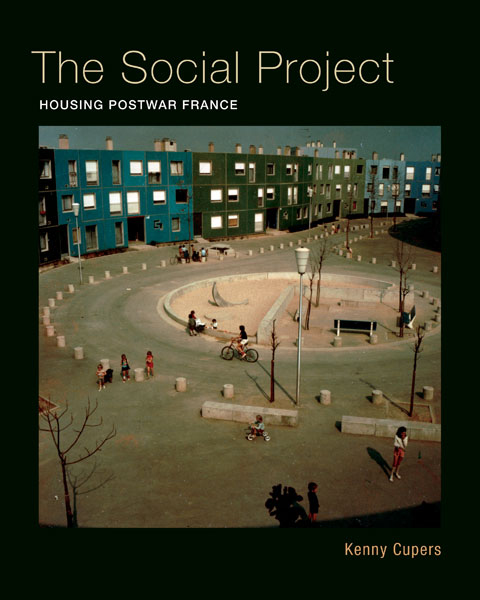- Home
- 2015 Cummings
2015 Cummings Award Winner
 Kenny Cupers
Kenny Cupers
The Social Project: Housing Postwar France
Kenny Cupers’ The Social Project: Housing Postwar France (University of Minnesota Press, 2014) is a deeply researched, well-illustrated, and conceptually innovative study that challenges prevailing ideas about Modernism in architecture. It expands the boundaries of vernacular architecture studies — and, more generally, the fields of architecture and urbanism — by paying close attention to a wide range of often overlooked actors and forces that shape buildings and metropolitan landscapes: not only the designer and user, but also bureaucratic systems and academic knowledge. “Modern architecture,” Cupers argues, “did not belong to an avant-garde of architects alone; it was shared and shaped by government officials, construction, companies, residents’ associations, developers, and social scientists” (xii).
Between the mid-1950s and early 1970s, France, like much of Western Europe, undertook a massive, state-led construction program of multifamily housing in the suburbs, producing a “new world” for millions: serial, prefabricated housing slabs and towers surrounded by plazas, community centers, highways, parking, and “monstrous shopping-mall megastructures.” Quickly stigmatized and now much maligned, the grands ensembles have typically been framed as a product of misguided top-down forces influenced strongly by CIAM. Cupers complicates this positioning. The Social Project takes pains to illustrate through impressive archival research the complexity of Le Corbusier’s impact and the great degree to which other lineages and realities determined the shape of postwar France.
The Social Project places postwar French urbanism in a larger historical and global context, drawing connections between the French banlieues and United States public housing, British New Towns, Eastern Bloc microrayon, and even mass-built American suburbs such as Levittown. Cupers also explores France’s “social project” in the context of the country’s often overlooked private housing market: its strengths (few) and weaknesses (many) in the interwar period, the impact of wartime rent controls, the sector’s marginalization during the postwar decades, and its gradual resurgence in the 1960s and 1970s. Of equal interest, The Social Project deftly reintroduces familiar scholars and critics active in postwar France, such as Manuel Castells and Henri Lefebevre, complicating how their work has been interpreted in the Anglophone literature in the context of evolving regimes of urbanism in Europe.
The task of selecting the book that best contributes to the overall intellectual vitality in North America of vernacular studies is not an easy one. The Social Project stands out not just for shedding light on an important topic that has been neglected in English-language scholarship or the high quality of original research, but for breaking new interpretive ground. In arguing Modernism, at least as deployed in France, was less a style than a product of complex negotiations between the professional imperatives, social-scientific expertise, and the quotidian, Cupers offers a new way of thinking about the twentieth-century built environment that is exemplary of Dell Upton’s admonition to write the history of architecture as “landscape history” rather than design history.